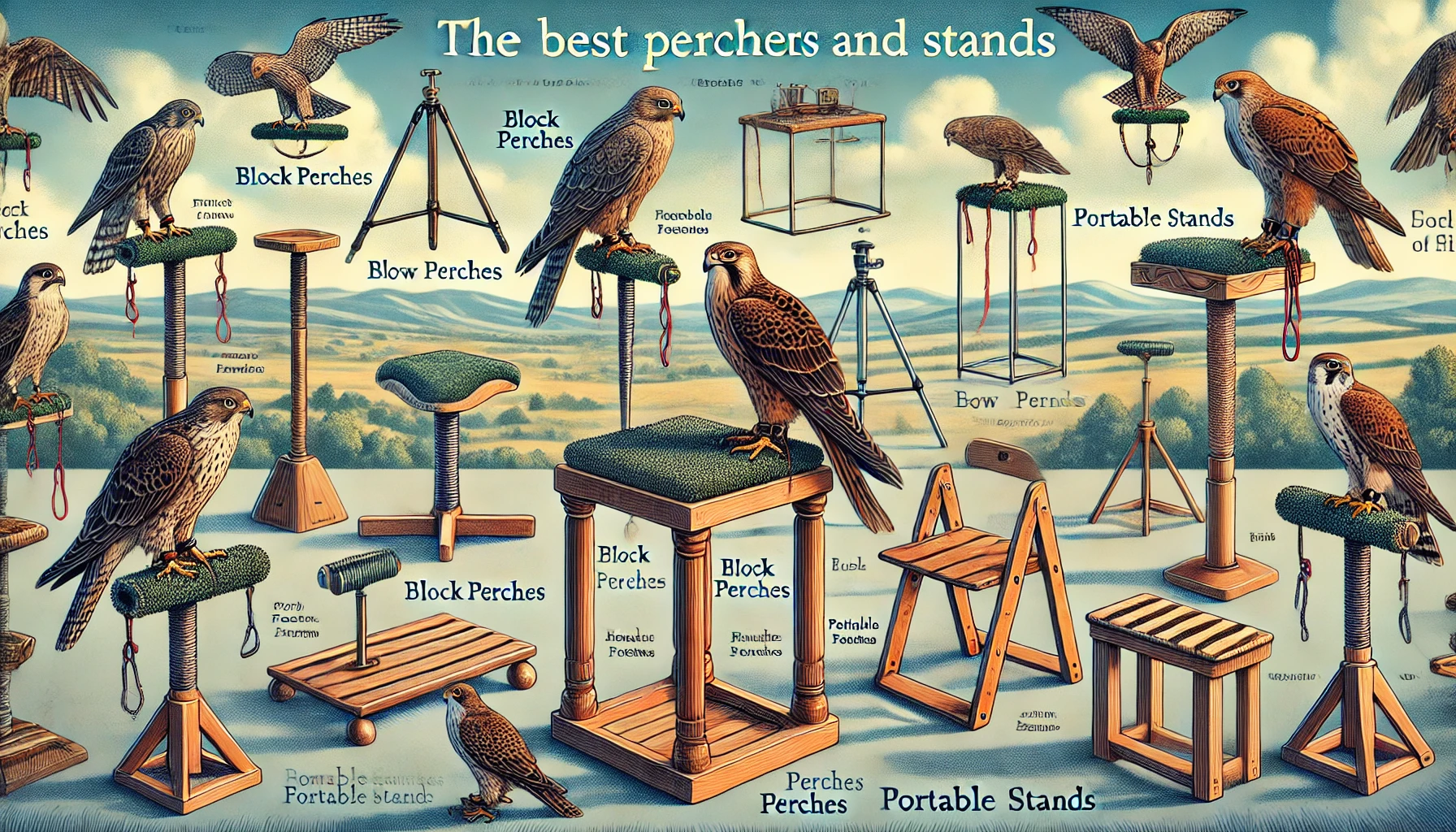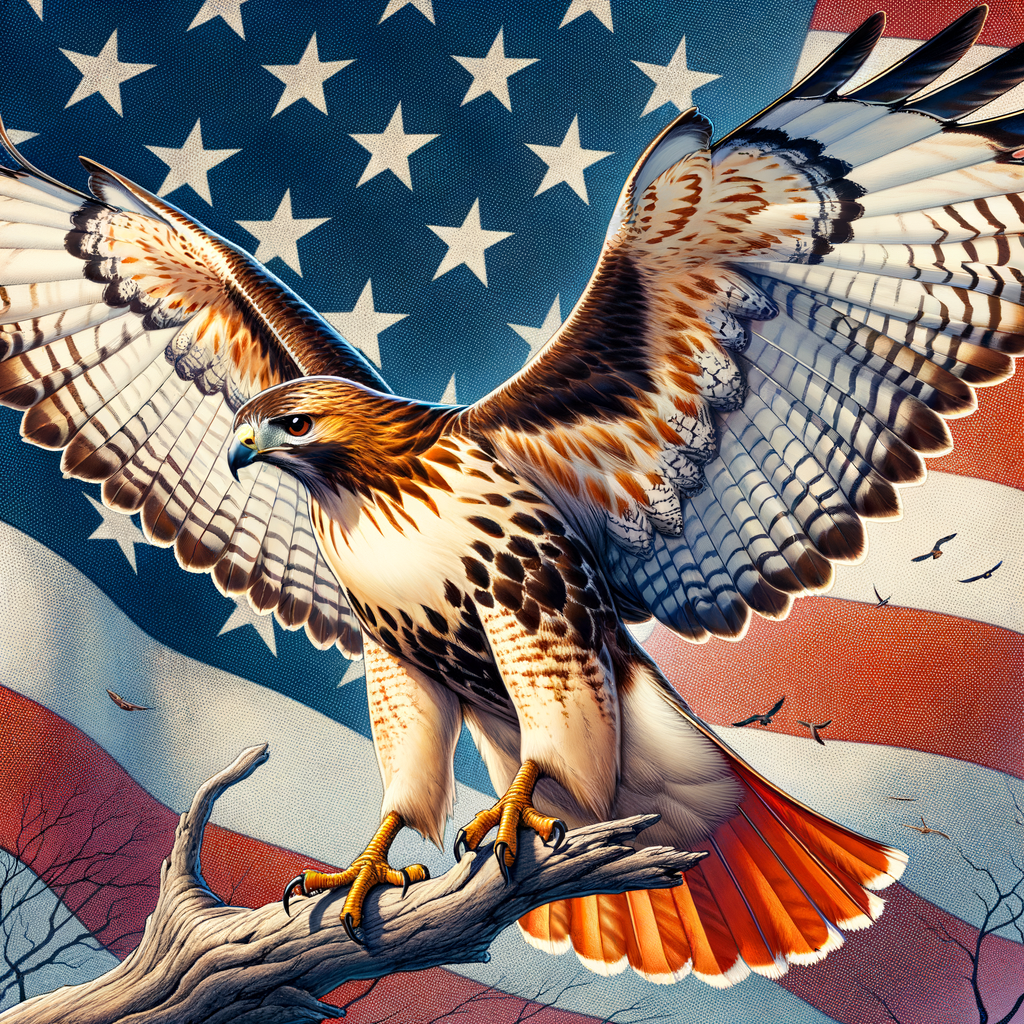Essential Insights on Perches and Stands for Falconry
- Variety of Perches and Stands: There are different types of perches and stands used in falconry, each designed to meet the specific needs of different birds.
- Perch Types and Bird Welfare: Choosing the right perch helps maintain the bird’s foot health and overall well-being. A suitable perch can prevent injuries and discomfort.
- Materials Used: Perches and stands can be made from various materials like wood, metal, and synthetic materials. It’s important to choose durable and comfortable options for the bird.
- Cleaning and Maintenance: Regular cleaning and sanitation of perches and stands is crucial to prevent diseases and keep the birds healthy.
- Size and Stability: The size and stability of the perch should be appropriate for the bird’s size to ensure safety and comfort.
- Importance of Variety: Providing a variety of perches and stands can help simulate a natural environment, which can be beneficial for the bird’s mental and physical health.
- Customization and Adjustments: Customizing and adjusting perches and stands to fit the specific needs of each bird can enhance their comfort and safety.
- Portable Options: Some stands are designed to be portable, making it easier to transport and use them in different locations.
- Expert Recommendations: Consulting experienced falconers or specialists can provide valuable insights into selecting the best perches and stands for your birds.
The Key to a Happy, Healthy Falcon: Understanding Perches and Stands
Imagine trying to dance an Irish jig in a pair of mismatched shoes. Awkward, right? You bet it is! Just like a dancer needs the perfect pair of shoes to perform their best, your falcon needs the right perches and stands to stay happy and healthy. At Learn Falconry, we’re all about helping you give your feathered friend the best experience possible. That’s why this article is all about the essential role of perches and stands in the world of falconry.
You see, perches and stands are not just ordinary pieces of equipment; they are a falcon’s chill-out zone, their resting spot, and their lookout point. Whether your falcon is taking a break after a long flight or simply enjoying its surroundings, the right perch can make all the difference. But why should you care? Well, a good perch can prevent injuries, make your falcon more comfortable, and even improve its overall well-being.
So, keep reading to discover everything you need to know about picking the perfect perch and stand for your majestic bird. Think of it as giving your falcon the best pair of dancing shoes ever! Let’s dive into the world of falconry perches and stands and make sure your winged companion is always on pointe.
Falcon Perches and Stands: Essential Tools for Falconry Enthusiasts
Falconry, the art of training and flying birds of prey, has been practiced for centuries. While many focus on techniques for training and flying, the importance of equipment like falcon perches and stands can’t be overstated. These pieces play a crucial role in the care and training of falcons. Let’s dive into why falcon perches and falcon stands are essential and how they enhance the falconry experience.
Understanding Falcon Perches
What Are Falcon Perches?
Falcon perches are specialized resting places designed for falcons. These perches are typically made from durable materials that provide both comfort and stability for the bird. They come in various shapes and sizes to cater to different species and training environments. You can learn more about the various equipment types used in falconry.
Types of Falconry Perches
- Bow Perch: Shaped like a bow, this perch is often used for larger falcons like the Gyrfalcon. Its design ensures the bird’s feet stay healthy and free from pressure sores.
- Block Perch: A cylindrical perch commonly used for smaller falcons like the American Kestrel. Block perches are portable, making them ideal for training sessions.
- Ring Perch: This type of perch provides a circular resting area, allowing for easy tethering and movement.
Each of these perches is vital for training and maintaining the health of your falcon. For more insights, check out our guide on training techniques.
The Role of Falcon Stands
Why Falcon Stands Are Important
Falcon stands, often used in conjunction with perches, provide a stable base for the perches. They ensure the bird remains in a secure and comfortable position during rest and training. Stands can be adjusted in height, making them versatile for different training scenarios.
Benefits of Using Falconry Stands
- Stability and Safety: Stands provide a solid foundation, reducing the risk of the perch tipping over.
- Portability: Many falcon stands can be easily disassembled, allowing falconers to transport them to different training sites.
- Adjustability: The height-adjustable feature of many stands helps accommodate different falcon species and their specific needs.
Having the right equipment like stands ensures your training sessions are productive and safe. Discover more about how stands fit into a beginner’s toolkit in our beginner’s guide.
Choosing the Right Equipment for Your Falcon
Selecting the appropriate falcon perches and stands is crucial for the wellbeing of your bird. Factors to consider include the size and species of your falcon, the intended use (whether for training or rest), and the materials used to ensure durability and comfort.
You can explore more about different species and their specific needs here.
Conclusion
Proper equipment is fundamental in the practice of falconry. By investing in quality falcon perches and stands, you not only enhance the training experience but also ensure the health and comfort of your falcon. For more detailed equipment overviews and detailed product information, visit our equipment section.
Keep discovering the rich history and intricate techniques involved in falconry on our website. Check out the history of falconry to understand its ancient origins, and learn more about mastering modern falconry techniques.
Happy Falconing!
Overview of Falconry Perches and Stands
Dimensions
Perches and stands for falconry come in all sorts of shapes and sizes. This variety makes it easier to find the perfect fit for every kind of hawk. Here are some common dimensions you’ll find:
| Size | Depth | Width | Height |
|---|---|---|---|
| Small | 5 inches | 9.5 inches | 4.5 inches |
| Medium | 6 inches | 10 inches | 5 inches |
| Large | 7 inches | 11 inches | 6 inches |
Features
The features of falconry perches have been thoughtfully designed to ensure the safety, comfort, and ease of use for both the bird and the falconer:
- Rounded Edges: Prevents the leash from getting tangled.
- Recessed Stadium Turf: Allows the leash to move freely.
- Drain Holes: Avoids water accumulation on the surface.
- Mounting Holes: Provides secure installation options.
- Eyelet Holes: Additional mounting options for flexibility.
Materials
Choosing the right materials for perches is crucial because they need to withstand different weather conditions:
- Plastic: Durable and resistant to weather changes.
- Stainless Steel: Strong, long-lasting, and resistant to rust and moisture.
Design
The design of a perch or stand is not just about how it looks but also how it functions:
- Safety and Functionality: Designed to prevent entanglement and protect the bird’s tail feathers and toes.
- Comfort: The surface is soft and free of irritants, making sure the hawk’s feet don’t get hurt.
Availability
Perches are available in various styles to suit different needs and environments:
- Block Perches: Traditional and sturdy.
- Ring Perches: Popular for their simplicity and effectiveness.
- Bow Perches: Offer a unique shape for different uses.
- Portable Perches: Easy to move around.
- Traditional Perches: Classic designs that have stood the test of time.
- Wrapped Designs: Provide additional comfort for the hawk’s feet.
These perches are suitable for a wide range of birds, from the small kestrel to the mighty eagle, and can be used both indoors and outdoors.
Essential Insights on Falcon Perches and Stands
Understanding the importance of perches and stands is crucial for anyone involved in falconry. These essential tools not only provide a comfortable resting place for your birds but also ensure their safety and well-being. Here are the key takeaways:
- Diverse Designs and Sizes: Perches and stands come in various styles and sizes to accommodate different types of hawks, from small kestrels to large eagles. Their dimensions are thoughtfully designed to suit the needs of different birds and environments.
- Safety and Comfort: Quality perches feature rounded edges, recessed stadium turf, and drain holes to prevent water accumulation, all designed to protect your bird’s feathers and toes from harm. The materials used are typically durable, such as plastic and stainless steel, ensuring they last a long time and can endure varying weather conditions.
- Functional Features: These perches are equipped with features like mounting holes and eyelet holes to ensure secure installation and prevent leash entanglement. This supports the bird’s movement and promotes a tangle-free experience.
- Wide Availability: With options ranging from block and ring perches to portable and traditional designs, there is a suitable perch for every falconer’s needs. These designs cater to both indoor and outdoor settings, providing versatility no matter the environment.
When selecting perches and stands for your birds, prioritize safety, comfort, and durability. Ensuring that your equipment meets these standards will help create a better environment for your hawks, promoting their health and enhancing your overall falconry experience.



